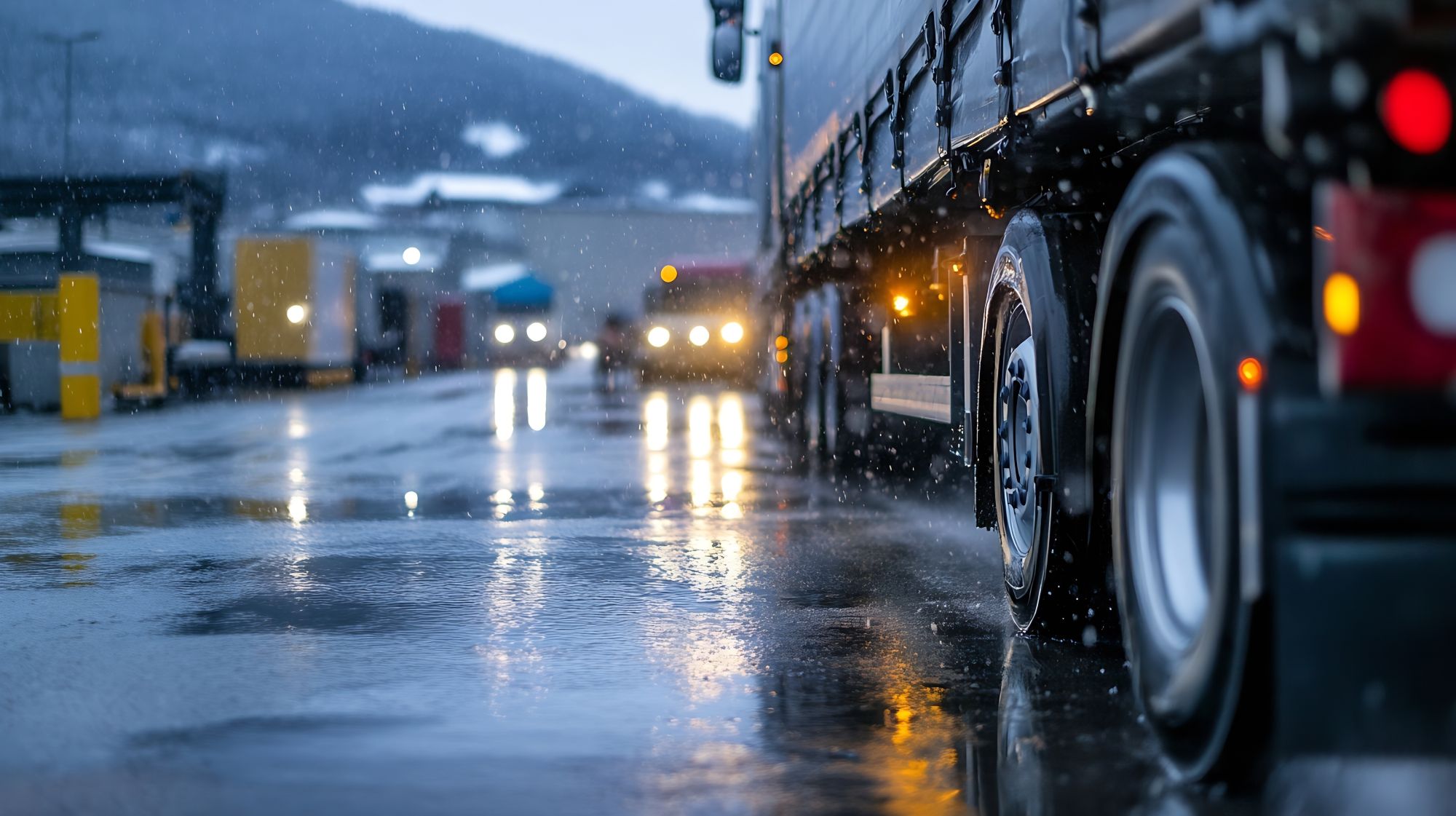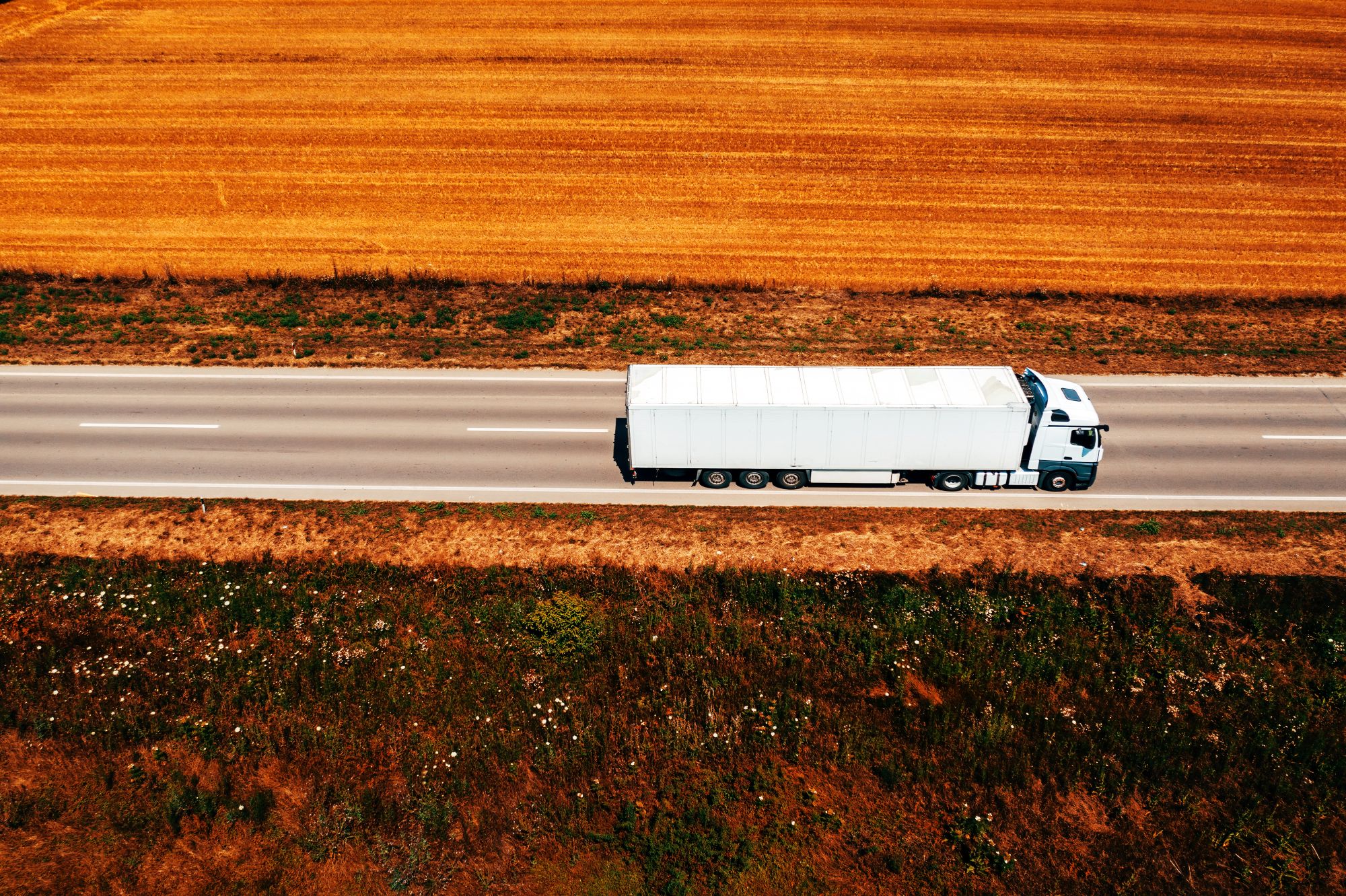
Guest
Как изменението на климата се отразява на сектора на мобилността
Създаден: 21.07.2025
•
Актуализирано: 21.07.2025
Изменението на климата вече не е далечен риск. За работещите в автомобилния транспорт това е ежедневна оперативна реалност, която с всяка изминала година става все по-трудно да се пренебрегне. От горещините, които разтопяват асфалта, до наводненията, които прекъсват основни маршрути, въздействието на променящия се климат е заложено в дейността по превоз на стоки.
За мениджърите на автопаркове това означава да се ориентират в променящите се разпоредби, да актуализират инфраструктурата и да преосмислят планирането на непрекъснатостта. За шофьорите това означава да се адаптират към новите рискове на пътя - от спукване на гуми до нарушаване на сроковете за доставка. А за целия сектор това е сигнал за необходимостта от по-устойчив и съобразено с климата отношение към мобилността.
Прекъсването на времето е оперативна заплаха
През юли 2022 г. в Обединеното кралство е отбелязан най-горещият ден в историята. Тъй като температурите се покачват до 40 ℃, пътищата започват да омекват, като участъци от А14 са затворени поради влошаване на повърхността. Операторите на автопаркове бяха принудени да променят маршрута на доставките, понякога в кратки срокове, докато температурата на двигателите се покачваше и автомобилите се бореха да поддържат производителността си.
През същата година силните ветрове от бурята Юнис причиниха широко разпространени щети по товарните коридори в Западна Европа, като преобърнаха високопроходими превозни средства и повредиха чувствителни към температурата товари. Междувременно през януари 2024 г. бурята Хенк наводнява обширни райони в Централна Англия. Ключови маршрути в Мидландс бяха непроходими и някои шофьори останаха блокирани в продължение на часове.
Това не са единични случаи. Те са признаци на транспортна система, която става все по-уязвима от климатичните заплахи. Пътните настилки, компонентите на превозните средства и логистичните мрежи са подложени на изпитание от променящите се условия - и последиците се усещат по цялата верига на доставки.
Нарушени вериги за доставки
Когато става въпрос за смущения, свързани с климата, въздействието не се усеща само по отделни маршрути. Засегнати са цели вериги за доставки - понякога без предупреждение. В Нидерландия повишаването на морското равнище и по-силните валежи карат властите и бизнеса да преразгледат устойчивостта на критичната логистична инфраструктура, особено в ниско разположените промишлени райони.
Пристанището в Ротердам - най-голямото морско пристанище в Европа - е предприело активни действия за адаптиране към климатичния риск, като е укрепило кейовите стени, повдигнало е пътищата за достъп и е модернизирало системите за дъждовна вода, за да се предпази от наводнения. Логистичните центрове във вътрешността на страната също са подложени на контрол, тъй като екстремните метеорологични условия разкриха уязвимостта на пътищата за достъп и отводняването.
Иновации в транспорта
Технологиите за автопарка се усъвършенстват бързо, особено що се отнася до електрификацията и интелигентната диагностика. Но изменението на климата създава нови трудности дори за най-усъвършенстваните превозни средства. Ефективността на батериите може да намалее с до 20% в студено време, което намалява ефективния пробег на електрическите микробуси. В същото време високите температури ускоряват разрушаването на гумите и допълнително натоварват охладителните системи на автомобилите.
За да се справят с тези проблеми, някои оператори инвестират в системи за прогнозна поддръжка, които използват телематика, за да предвидят износването и да планират ремонтите, преди да се появят скъпоструващи повреди. Други модернизират системите за комфорт в кабината, за да защитят благосъстоянието на водача по време на периоди на екстремна топлина или студ. Въпреки че тези промени са свързани с първоначални инвестиции, те могат да донесат дивиденти по отношение на времето за работа, безопасността и задържането на водачите.
Нарастващият риск от климатичните промени променя и застраховането. Някои застрахователи реагират на повишената честота на исковете за екстремни метеорологични условия, като повишават премиите и затягат изключенията. Полиците за прекъсване на дейността, по-специално, са подложени на по-строг контрол, особено когато веригите за доставки са уязвими от повторни смущения. И макар че застраховането на товари продължава да се разглежда, не всички полици автоматично покриват закъснения, причинени от климатични събития като наводнения или силни ветрове.
Мениджърите на автопаркове трябва да преразгледат покритието си с оглед на тези нови рискове. Това означава да се провери дали има изключения, да се прецени как са дефинирани събитията, свързани с климата, и да се гарантира, че критичните пропуски - като например престой поради затваряне на пътища - са адекватно адресирани. В някои случаи демонстрирането на проактивен подход към управлението на риска, смекчаването на последиците от наводненията и обучението на водачите също може да помогне за осигуряването на по-благоприятни условия.

Регулаторната среда
Въпреки че физическите въздействия на изменението на климата вече са видими, регулаторните промени добавят още едно ниво на сложност за операторите. Зоните с ниски емисии се разширяват бързо в Обединеното кралство и Европа, като поставят нови изисквания към състава на автопарка и спазването на изискванията. В Лондон зоната със свръхниски емисии (ULEZ) продължава да се разраства, а градове като Бирмингам и Оксфорд въведоха свои собствени варианти.
На европейско равнище пакетът Green Deal и пакетът Fit for 55 поставиха амбициозни цели за декарбонизация. Операторите на автопаркове са стимулирани - и все по-често задължавани - да преминат към по-чисти горива и технологии. Операторите са изправени пред нови базови изисквания за приемливи бизнес практики - от изисквания за електрификация до правила за прозрачност на веригата за доставки.
За тези, които управляват автопаркове, тези промени представляват както логистично предизвикателство, така и стратегическа възможност. Приемането на устойчивостта не е само за избягване на санкции - то е за осигуряване на бъдещи операции и изпреварване на променящите се очаквания на клиентите.
Изграждане на устойчиви операции
Адаптацията не става за една нощ, но постепенните промени могат да имат значимо въздействие. Някои оператори вече извършват оценки на риска от климатични промени в своите автопаркове, като идентифицират активите и маршрутите, които са най-уязвими от смущения. Други предлагат на шофьорите актуализирано обучение за подобряване на безопасността и вземането на решения по време на екстремни метеорологични събития.
Изборът на гориво също се променя. Превозвачите, които търсят алтернативи с по-ниски въглеродни емисии, се обръщат към HVO - хидроочистено растително масло - алтернатива на дизела, която намалява емисиите, без да изисква нова инфраструктура. В същото време тези, които инвестират в софтуер за оптимизиране на натоварването, виждат ползи не само в икономията на гориво, но и в намаляването на емисиите, което подпомага постигането на целите за съответствие.
Вече няма никакво съмнение, че изменението на климата определя бъдещето на автомобилния транспорт - не след десетилетия, а точно сега. Предизвикателството пред операторите е да преминат от реактивно мислене към по-стратегическо и дългосрочно мислене. Това означава да се разберат рисковете, да се действа навреме и да се признае, че устойчивостта бързо се превръща в източник на конкурентно предимство.
"Операторите на автопаркове в Обединеното кралство и Европа ни казват едно и също нещо", казва Ник Рентън, ръководител на отдела за европейска стратегия и бизнес развитие в SNAP. "Климатичните смущения не са бъдещ риск - те вече са тук и засягат всичко - от складирането и планирането на маршрутите до благосъстоянието на шофьорите. Автопарковете, които процъфтяват, ще бъдат тези, които разглеждат устойчивостта на климата като бизнес стратегия, а не само като реакция при извънредни ситуации.
"Това е важно, защото цената на бездействието нараства - не само финансово, но и по отношение на пропуснатите доставки, престоя в работата и благосъстоянието на шофьорите на пътя. Ако искаме да запазим движението на стоките и развитието на бизнеса, трябва да започнем да изграждаме тази устойчивост още сега."
В SNAP работим в тясно сътрудничество с автопаркове в Обединеното кралство и Европа, за да им помогнем да се ориентират в тази нова реалност. Независимо дали става въпрос за прозрения, партньорства или по-интелигентни инструменти за работа на пътя, ние сме тук, за да подкрепим тези, които поддържат колелата в движение - независимо от времето. Регистрирайте се днес, за да се възползвате от нашите решения за управление на автопаркове.



